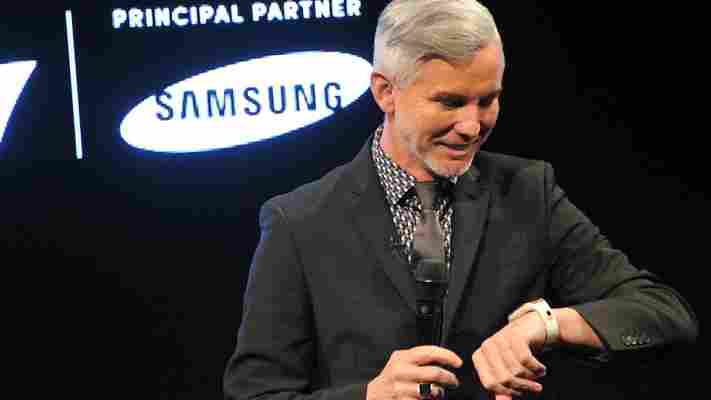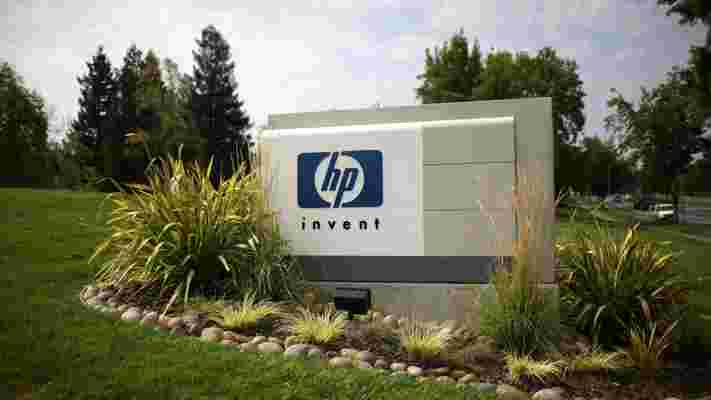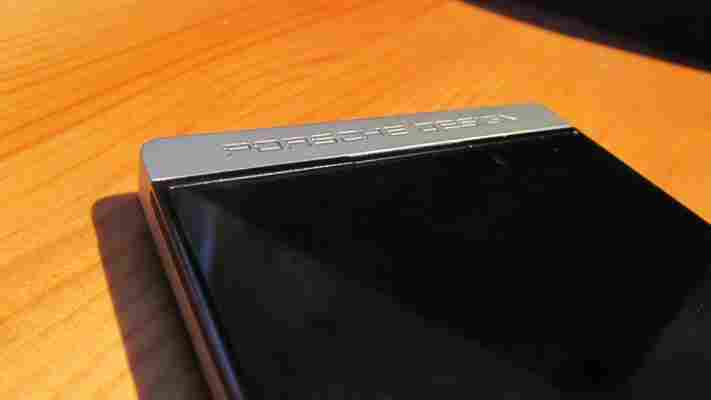To promote its Galaxy Note 3 and Galaxy Gear devices, Samsung has teamed up with legendary director Baz Luhrmann (Romeo + Juliet, Moulin Rouge, The Great Gatsby) for The Shoot . The project brought young Australian filmmakers together at the National Institute of Dramatic Art to create a short film for the Sydney Opera House’s 40th anniversary celebrations.

We interviewed Luhrmann, who has been a Samsung proponent for some time now , to learn how he has integrated Samsung’s technology with his filmmaking.
Luhrmann said he began working with Samsung because he was struck by the way the technology helped him work together with his wife, costumer designer Catherine Martin. The combination of mobility, Photoshop support and real-time sharing made it possible for his team to work quickly in a way that they couldn’t have before.
The director also said he’s impressed by the “genuine human aspect” that Samsung maintains even as a large multinational electronics company.
For The Shoot, 10 young Australian filmmakers had six days to create a short film together. Participants were given Samsung’s Galaxy Note 3 and Galaxy Gear smartwatch to help them with their project. The resulting film will premiere tonight at the Sydney Opera House.
http://www.youtubeom/watch?v=kqd0P9JTYxc
Luhrmann said he was initially worried for the crew because of the short amount of time they had, but what they managed to achieve eneded up being “remarkable.” He described his role in the project as that of a “enthusiastic supporter/sounding board.”
“I’m not sure if I’m a mentor so much. I’m always a bit worried about that idea. I was more of a go-to person just to say, “Okay, why are you sitting around watching, listening and talking to me? Get out and do it. They did everything.””
Luhrmann said he’s in an older generation that can be slower to pick up technology, but the young filmmakers took to the Samsung gear right away.
“The younger generation, they don’t even think about the way their thoughts flow through a technological piece of equipment,” he said. “They were genuinely using it on the set.”
While we were talking, Luhrmann noted that he’s having a hard time getting the Galaxy Gear back from his 10-year-old daughter, who likes to take photos of him and call her friend with it.
“I’m sold on the Galaxy Gear. Really, when you’re making a film, you’re running around a lot, I use my hands all the time and it’s a hands-free device.
When I asked how technology has changed the way he makes films over the course of his career, he referenced comments by Francis Ford Coppola, who was an early adopter of digital technology. Back in the 1970s, Coppola reportedly remarked that one day kids would make their own movies with hand-held cameras.
“The truth is that’s what happened,” Luhrmann said. “I could take the technology and I can make a short film and I can cut it on the technology.”
One of the biggest advances is the ability to watch footage as soon as it has been shot.
“It used to be that I had to go to a room to see the work I’d shot once a night,” Luhrmann said, adding that when Lawrence of Arabia was filmed in the 1960s, the crew had to mail the film back to England.
Now Luhrmann loads the day’s footage onto his Galaxy Note 3 to watch it.
“Mobility, immediacy, collaboration and sharing. They’re the things that make it a truly useful filmmaking tool,” he said.
The ongoing relationship between Luhrmann and Samsung does call into question the objectivity of his glowing endorsement of the Galaxy Note 3 and the Galaxy Gear, but it’s still interesting to hear how one of the world’s top directors is using the devices for his craft.
‘It’s not too late’: HP exec says firm is developing a new smartphone with a unique user experience
Hewlett Packard (HP) failed rather miserably with WebOS, but the company is now reportedly working on a new smartphone to reclaim a stake in the market.

Yam Su Yin, HP’s Senior Director for Consumer PCs and Media Tablets in the Asia Pacific region, told The Indian Express that the firm was working on every hardware skew at the moment, including tablet PCs, notebook PCs and all-in-ones (AIOs).
When Yin was pressed on the existence of a new HP smartphone, she said: “The answer is yes but I cannot give a timetable. It would be silly if we say no. HP has to be in the game.”
HP picked up the WebOS platform when it acquired Palm for $1.2 billion in April 2010. Handset sales were less than impressive, however, forcing the company to abandon the operating system , its TouchPad tablet and any WebOS handsets that were still in development.
It later open sourced some of the platform, before selling the rest to LG in February 2013. HP would be unwise to go down this route again, but its options elsewhere are rather limited. Android is an obvious choice, although the sea of existing OEMs and Samsung’s huge market share would make it difficult for HP to stand out.
BlackBerry 10 is a closed platform for all intents and purposes, and Windows Phone 8 is still struggling to catch up with Android and iOS, despite recently leap frogging BlackBerry to third place .
“Being late you have to create a different set of proposition,” Yin added. There are still things that can be done. Its not late. When HP has a smartphone, it will give a differentiated experience.”
The smartphone industry relies on new players to expand consumer choice and put pressure on those companies which have enjoyed market leadership for a long period of time. It’s why Mozilla’s Firefox OS platform – launching tomorrow – the MeeGo-based Sailfish OS by Finnish startup Jolla and Ubuntu OS have caused such a stir.
HP’s desire to re-enter the smartphone game should be welcomed, but it’s essential that the company learns from its past mistakes. The industry has changed dramatically in the last two years and HP will need something superior – rather than simply different – to its competitors to make any sort of dent.
Image Credit: Justin Sullivan/Getty Images
Hands-on with BlackBerry’s $2,350 Porsche Design P’9982 smartphone: Where’s the added value?
Following on from BlackBerry’s recently announced financial injection – a $1 billion investment made by Fairfax Financial and a number of other backers – the last thing we expected to roll off the production line just a few weeks later was a luxury high-end smartphone made in conjunction with Porsche Design.

But with the announcement of the BlackBerry P’9982 , that’s exactly what we got – even better, we’ve actually got one for a couple of weeks. Here’s our first impressions of the device.
Before we go on, yes, it’s expensive – around £1,450/$2,350 worth of expensive but that’s nothing like as outrageous as the asking price for most Vertu phones, and it’s only a little over twice the RRP of a Samsung Galaxy Note 3 SIM-free in the UK. For the customers this phone is aimed at, £1,450 isn’t going to break the bank. We got the “standard” model, rather than the limited edition (500 units) Crocodile edition.
When you buy a smartphone conceived in conjunction with a famous design house, you expect a certain level of refinement. And given that it’s not the first tie-up between the two companies , we had a good idea what could be in store.
Unboxing the P’9982, what you find is a satin finished stainless steel frame and real Italian leather rear panel. On the limited edition model, the rear panel is finished in crocodile skin instead. Each one comes with it’s a unique BBM PIN too, as shown above on the little card.
Being based on the BlackBerry Z10, this handset feels very familiar but the Porsche Design’s satin finish means it retains that trademark steely-grey look that we’ve come to expect. And one that we actually quite like.
At 140 grams, it’s not the lightest phone you can find, but then luxury devices rarely are and it’s reassuring to have a little weight in your hands. It reminds you of what your money has been spent on.
Unlike some of the Vertus and other luxury smartphones, you won’t find embedded diamonds adorning the P’9982 but you do get the PORSCHE DESIGN logo etched into the top of the device. As a reminder of what this thing really is, it also still says BlackBerry at the bottom of the screen (as you’d find on a standard Z10 display), I think I’d have preferred to lose the BlackBerry branding at the bottom and perhaps have the Porsche etching there instead, but then that might just be me.
The other most notable features in its design are the angular (yet rounded) bottom section of the handset making it a little taller than a standard Z10, and the little Porsche Design logo inset on each side of the chassis. A handy reminder that this is no ordinary BlackBerry, if the less subtle logo etched across center top hadn’t been a big enough hint.
It’s a Z10. No really, it pretty much is. Internal storage has been increased from 16GB to 64GB, but that’s about it.
Despite the fact that you could go to Amazon right now and buy a BlackBerry Z10 for less than $285/£180 SIM-free, the P’9982 keeps the same 1.5Ghz dual core processor, the same 2GB RAM, the same 4.2-inch 720p display. There’s nothing wrong with what’s on offer, but the Z10 launched in January and quad-core range-toppers are now the norm, so an already-dating spec list looks a little miserly, which doesn’t really fit with the whole luxury thing.
But then a phone like this might not be aimed at buyers who are exclusively focused on a spec list, unfortunately, in our albeit brief testing so far there are a few delays when doing the most basic of things, like signing into an app. It’s not like there are big lags, perhaps only half a second to a couple of seconds, but with a price tag pressing at £1,500 I’d at least expect hardware that could keep things sharp.
The same is true of the display, it’s perfectly functional and bright – as much as the Z10 display ever was – but with 1080p now the norm and brighter, more vibrant screens out there, the P’9982 doesn’t really blow you away here either.
The rear panel of the phone is removable, achieved by simply prying it up from the bottom, as normal. Underneath you’ll find the SIM and microSD slots (for cards up to 64GB), and the battery, of course.
Most notably about this though, and somewhat unbelievably, the back panel doesn’t really seem to fit properly. If you hold it vertically and press it from side to side there’s a little bit of movement. It should go without saying that while the P’9982 doesn’t necessarily need the tech specs to compete with other devices, it does need a thoughtful and perfectly executed design.
We haven’t really had the P’9982 long enough to comment on the battery life (claimed 90 hours talk time) or the 8-megapixel camera, but we’ve spent enough time with the Z10 to not hold our breath for the picture quality.
The P’9982 runs a very slightly tweaked version of the BlackBerry 10.2 OS, so you’ll find the usual ‘peak and flow’ navigation, active apps panelled on the first screen and the selection of all apps on home screens to the right. As it’s version 10.2, it also includes the updates to features like Priority Hub, detailed lock screen notifications and the ability to respond to notifications without navigating away from whatever you were already doing.
These features aren’t new for the P’9982 exclusively – we’ve already seen them ship on the Z30 and subsequently roll out to other devices – but as noted in that review , it’s evolution rather than revolution for the OS.
The Priority Hub is a particularly worthwhile addition to the OS as it helps the phone excel at what it’s best at: being a communication device. In essence, it automatically categorizes email, IM and other messages as important and can be trained to learn which items are important or not for the future. Better still, if you don’t like it or don’t need it, you can switch it off.
The Hub (not Priority Hub) is home to all your notifications, whether that’s BBM, email, social or anything else you’ve connected up, and again, works well as a great way of keeping track of everything all in one place.
Porsche Design-specific software tweaks are few and far between on the P’9982 but you can find some modified clock screens and a countdown timer.
There’s also a curated/Porsche Design branded selection of apps awaiting you when you open the BlackBerry World app store.
This isn’t an exhaustive review by any means, we’ve only used the device for a few hours, but from what we’ve seen, for a premium device, it somehow doesn’t quite manage to feel like it.
At £1,400 it sits at a strange junction between high-end ‘hero’ handsets and true luxury devices. The point of a Vertu, to me at least, is in the effort and (over-) engineering that has gone into every single component. How many other handsets do you know that grow their displays? And then there’s the Concierge service. If price isn’t really the point, what you’re paying for is luxury, convenience, exclusivity: perceived added value. Admittedly, when price isn’t the point it ends up costing at least five times more than the P’9982, too, but at least there’s a point.
Unfortunately, first impressions do count, and on this occasion, I just don’t quite see the point of the tie-up. Its design is close enough to a standard Z10 to be recognisable as such, and the innards are practically identical too. Even the set of headphones that comes with the device is the ‘standard’ BlackBerry Premium headset. With almost zero added value coming from software tweaks or other services, I can’t see too many ‘normal’ customers saving up especially to get their hands on a P’9982. Or many reasons why they should.
But then, it was never really aimed at you or me.
The P’9982 is available to buy from today in Harrods’ flagship store in London, or from the Porsche Design online store for around £1,450/$2,350. Nonetheless, the company says it’ll also be available from “select carriers and retailers around the world”, so it doesn’t seem you need to actually be in the UK, should you want one.
